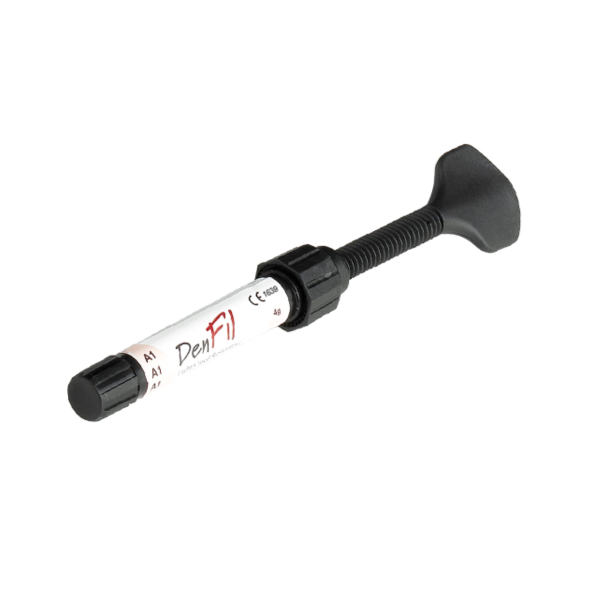Denfil has an extremely low monomer release and has excellent manipulation properties, which help to carry out restorations at a high professional level. There is a large color scale of this material, which allows you to choose the optimal shade that will match the other chewing elements in the dentition.
Denfil can be polished almost to a mirror color, so well it lends itself to exterior finishing. This composite material is used in the location of cervical caries, carious cavities of different classes of lateral and frontal teeth.
Denfil has excellent indicators of strength and reliability , with careful operation, it is ready to serve for a long time. This dental structural material has minimal shrinkage during use, does not lose its original color under the influence of an aggressive environment in the oral cavity, is radiopaque, and is well suited to various types of processing.
Indications and contraindications for use
It should not be used in patients with hypersensitivity to the components of this material or hypersensitivity to methacrylate monomers.
Denfil is used to restore chewing elements after they have lost their functionality and integrity under the influence of caries. To use it, you need to brush your teeth with pumice stone and water to remove stains and extraneous plaques on the surface. If the chewing elements are not the same color, pay attention to the shade and depth of the restoration. It is advisable to choose a shade after moisturizing. You can also use the Vita shade scale. It is recommended to use a rubber dam to isolate the cavity, which is restored with the help of structural material.
Denfil installation
After carrying out preparatory work, the usual acid etching should be carried out. It is not recommended to leave remnants of amalgam or other fake materials on the inner surface of the cavity being prepared, as this can hinder light transmission and hardening of the restorative composite.
To protect the pulp, close the adjacent dentin with a small amount of calcium hydroxide-based sealant, leaving the rest of the cavity open for bonding (BC Plus) . If desired, glass ionomers or other eugenol-free substrate materials can be used.
Before placing the matrix, it is recommended to use wedges to achieve a slight separation and promote optimal direct contact between Denfil and the tooth. This is followed by the process of dentin etching. Composite material is extracted using a syringe or a capsule with a certain amount of denfil is used.
The restorative material is applied and photopolymerized in layers with a maximum thickness of 2.5 mm. Then comes the moment for polymerization. Immediately after hardening, the shape of the restored surface is given with the help of a finishing boron or carborundum head. The occlusion is carefully corrected by removing excess material with a polishing boron or carborundum head.
The composition of Denfil includes: triethylene glycol glycidyl methacrylate, colloidal silicon dioxide, Bisphenol A glycidyl methacrylate, barium aluminosilicate and a small amount of impurities.
Sales form: syringe 4 years . Color: A1, A2, A3, A3.5, A4, B1, B2, B3, C2, C3, D3, A2O, A3O, I, P, E.
Manufacturer: Vericom (Korea).
There are no reviews for this product, be the first to leave your review.

No questions about this product, be the first and ask your question.

